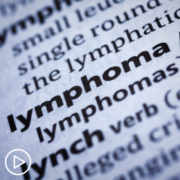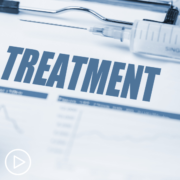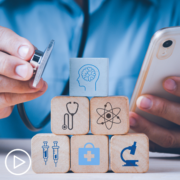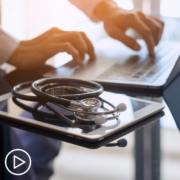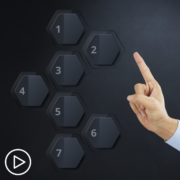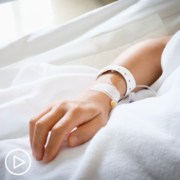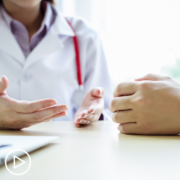Lymphoma Rashes: Symptoms and Treatments
Editor’s Note: This resource, Lymphoma Rashes: Symptoms and Treatments, was originally published by MyHealthTeam.
When most people think of lymphoma symptoms, a rash isn’t usually something that comes to mind. For some types of lymphoma rashes aren’t an issue, but rashes are a symptom in several different lymphomas.
Cutaneous T-cell and B-cell lymphomas often manifest as a rash in their early stages. “When I first was diagnosed with cancer, I had a rash all over my abdominal area,” one MyLymphomaTeam member said. These conditions are a subset of non-Hodgkin lymphoma and are commonly slow growing. Many people with cutaneous lymphomas go years without a correct diagnosis. Unlike many other types of lymphomas, the lymph nodes are rarely affected until late into the condition and are not raised or swollen. Cutaneous T-cell lymphomas make up around 75 percent to 80 percent of all cutaneous lymphomas.
What Does a Lymphoma Rash Feel Like?
Lymphoma rashes can be localized or occur all over the body (also referred to as erythroderma). A cutaneous T-cell lymphoma called mycosis fungoides is responsible for around half of all skin lymphomas. In its early stages, mycosis fungoides is sometimes mistaken for psoriasis or eczema. “I was itching very bad from my neck to my feet. I went to nine different doctors [and] they all misdiagnosed me,” one member reported.

Lymphoma rashes are also called lesions. They are divided into three categories: patches, plaques, and tumors. Patches are flat, smooth, or scaly to the touch and look like a typical rash. Plaques are harder, thicker, and scaly to the touch. Tumors are raised bumps or nodules.

Sézary syndrome (Dermnet NZ)
Erythrodermic (full-body) rashes are sometimes caused by Sezary syndrome, which makes up 15 percent of cutaneous lymphomas. The rash can feel hot, sore, and itchy. It is usually much more aggressive than mycosis fungoides. Cancerous lymphocytes are present in the blood in Sezary syndrome, but not with mycosis fungoides.
How Does a Rash Affect People With Lymphoma?
Members of MyLymphomaTeam described a variety of ways rashes have affected their lives. “This rash and itching is getting so frustrating. I can’t sleep well,” one MyLymphomaTeam member said. Another mentioned the difficulty a family member had with a rash. “I am always searching for information and ways to ease his pain and itching.” A third member who was reportedly in remission mentioned frustration with a possible recurrence. “I’m so irritated; I have new spots and went to a dermatologist and they tried to tell me that it’s eczema.”
What Causes a Lymphoma Rash?
Cutaneous lymphoma forms in the small number of lymphocytes that are present in the skin. A rash occurs when those lymphocytes mutate, become cancer cells, and grow uncontrollably. It is not considered a skin cancer because the initial source of cancer cells come from the lymphocytes instead of the skin cells themselves.
Skin Treatments for Lymphoma Rashes
Treatment options depend on what type of lymphoma is causing the rash. Most types of cutaneous lymphoma are slow progressing, and some cases never progress past the skin. Because of this, the American Cancer Society’s recommended treatments first target the skin. There are several different types of skin-directed therapies.
Topical Corticosteroids
Topical corticosteroids are the first line of treatment, like with many other skin conditions. The anti-inflammatory agents in them also kill lymphoma cells. They can be creams or ointments applied directly to the skin or injections given directly into affected areas. In addition to treating the rash, topical corticosteroids can decrease itching. Side effects can include skin thinning and hair growth. When used over a long period of time, they can affect the adrenal glands.
Topical Chemotherapy
Topical chemotherapy agents are usually given along with corticosteroids. Mechlorethamine is the most commonly used, and it works by blocking DNA replication in cancer cells. It is applied as a gel to the affected area. When used as a topical solution, it is not known to enter the blood. About 10 percent of those who are treated with Mechlorethamine develop contact dermatitis, a localized allergic reaction.
Another drug, Carmustine, is occasionally used as a supplement to Mechlorethamine. Unlike Mechlorethamine, it can be absorbed into the blood. Monitoring by a dermatologist is needed at higher doses.
Topical Immunotherapy
One commonly used drug is Imiquimod. When it is applied to the skin, it has been shown to clear cutaneous lymphoma lesions.
Retinoids
Retinoids are synthetic vitamin A medications that can cause certain types of cells to die. Retinoids are usually used when topical corticosteroids and chemotherapy agents are not effective. Since they can cause birth defects, women using the drug should not become pregnant.
Phototherapy
Phototherapy uses two types of UV light (A and B) to destroy cancer cells. If UVA light is used in treatment, Psoralen drugs are used in conjunction with it. Psoralens make the skin more sensitive to UV light. UVB does not require any drug administration before treatment, but it is used on thinner lesions only. “I am getting UVB light therapy every Wednesday, but every time I get it, more rashes come out,” a MyLymphomaTeam member said.
Radiation Therapy
Two different types of radiation therapy are commonly used. Total skin electron beam (TSEB) therapy penetrates only a few layers of skin and does not have the severe effects of more invasive radiotherapy. Brachytherapy places radioactive isotopes under the skin for a period of time.
Systemic Treatments for Lymphoma Rashes
If Sezary syndrome is present, skin-based treatments are not used because the condition also affects the blood. Instead, systemic treatments target the whole body. Many of these treatments are similar to skin-based ones.
Interferon
Interferons are cytokine compounds normally produced by cells as a response to disease. Interferons are typically injected three times a week for three to six months.
Retinoids
These are taken as an oral medication and not applied to the skin, but they work the same way as topical ones.
Histone Deacetylase (HDAC) Inhibitors
Histone deacetylase inhibitors work by targeting cells’ DNA in a way that allows cancer cells to die. The most commonly used drugs are vorinostat (Zolinza) and romidepsin (Istodax). Both are given intravenously. One MyLymphomaTeam member described a family member’s treatment with romidepsin, “She went for her initial treatment last Thursday and it seems to be working. Her itching has subsided significantly. Very slight side effects.”
Extracorporeal Photopheresis
Extracorporeal photopheresis takes white blood cells out of a sample of a person’s blood, exposes them to UV light, and puts them back into the bloodstream. The treated cells then act against the cancerous ones.
Antibodies
The most commonly used biologics to treat cutaneous T-cell lymphoma are monoclonal antibodies, which are developed to recognize specific types of cancer cells. Brentuximab vedotin (Adcetris) has been used to treat advanced cutaneous T-cell lymphoma. It works by targeting an antigen found on cancerous T cells.
Chemotherapy
While often used in combination to treat other cancers, chemotherapy agents are often used as “single agents” — one at a time — to treat cutaneous T-cell lymphoma.
Stem Cell Transplant
The only known cure for cutaneous lymphoma is a bone marrow transplant, also known as a stem cell transplant. Since this is a risky procedure, it is typically only done when the condition is very advanced or has come back repeatedly after other treatments.
MyLymphomaTeam Members’ Tips for a Lymphoma Rash
MyLymphomaTeam members have shared a variety of ways of dealing with rash. “You need treatment and creams to deal with the overwhelming itching,” one advised.
Specific topical treatments were mentioned by others:
- “Use a good skin cream, a steroid cream of 0.05 percent.”
- “I use a script from my dermatologist: 0.05 steroid cream, and every day I also use a good skin cream.”
- “Using aloe vera now helps with inflammation and itching.”
- “Try cannabis oil or cream.”
- “My doctors at UC Davis in Sacramento and University of California, Sacramento, gave me a prescription of triamcinolone acetonide ointment USP, 0.1 percent. … This medicine took care of the rash.”
Nutritional measures helped ease the rash symptoms for one member. “I juice at times. (I mix carrots, celery, kale/spinach, apple, orange and lemon juices, mixed with berries like blueberries, raspberries, and strawberries; and add some ginger and turmeric). I walk daily (get out in the fresh air) and use an elliptical and weight machines.”
Find Your Team
You are not alone. When you join MyLymphomaTeam, you gain a support network of more than 12,000 people who understand what you’re going through.
Have any questions about rash and lymphoma? Do you have any tips for dealing with a rash? Comment below or start a conversation on MyLymphomaTeam.

